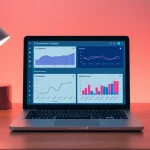Understanding AI Outreach Agents
In an era defined by rapid technological advancements, companies are continually striving to boost efficiency and maximize productivity. A pivotal innovation in this landscape is the emergence of AI outreach agents. These sophisticated tools leverage artificial intelligence to enhance sales processes, particularly in outreach and engagement strategies. By automating routine tasks, they empower sales teams to focus on more strategic aspects of their roles, ultimately transforming how businesses interact with potential customers.
What are AI Outreach Agents?
AI outreach agents are intelligent systems designed to automate various aspects of the outreach process. Primarily utilized by sales and marketing teams, these agents can handle functions such as prospect research, personalized messaging, follow-ups, and tracking interactions. They integrate deeply into the existing workflows of organizations, thereby streamlining operations and allowing teams to achieve a higher volume of personalized outreach with less effort.
Key Features of AI Outreach Agents
AI outreach agents come equipped with a variety of features that are essential for effective engagement:
- Automation: They can automate repetitive tasks such as email sequencing and lead qualification, allowing team members to focus on strategy rather than execution.
- Data-driven insights: AI agents analyze data from past interactions to enhance future engagements, providing recommendations on the best times to contact prospects or the optimal messaging styles.
- Integration: Many of these agents can seamlessly integrate with existing sales platforms (e.g., Salesforce, Outreach.io), making it easier for teams to leverage AI without overhauling their systems.
- Personalization: Advanced algorithms allow AI agents to tailor messages to individual prospects, enhancing the relevance and effectiveness of outreach efforts.
Benefits of Using AI Outreach Agents
The adoption of AI outreach agents offers many benefits that positively impact business outcomes:
- Increased Efficiency: By automating time-consuming tasks, organizations can increase their operational efficiency, allowing representatives to focus on building relationships rather than managing spreadsheets.
- Improved Conversion Rates: Personalized and timely outreach generated by AI agents can significantly enhance engagement levels, leading to higher conversion rates from potential leads.
- Consistent Messaging: AI agents ensure that all communications maintain a consistent style and tone, which supports brand identity and recognition.
- Scalability: As organizations grow, AI agents can help scale outreach efforts without a proportional increase in staffing or resources.
Integrating AI Outreach Agents into Your Workflow
Steps to Implement AI Outreach Agents
Integrating AI outreach agents into your existing sales framework requires careful planning and execution:
- Identify Objectives: Determine what problems you aim to solve with the introduction of AI outreach agents. Whether it is increasing leads or streamlining communication processes, clear objectives will guide the implementation process.
- Choose the Right Tool: Research different AI outreach agents to find one that aligns with your specific needs. Consider factors such as integration capabilities, ease of use, and support services.
- Train Your Team: Offer training sessions to help your sales team become familiar with the new tool. Emphasize how AI can augment their work, not replace it.
- Monitor and Adjust: After implementation, closely monitor performance metrics and gather feedback from your team to make necessary adjustments for optimal performance.
Choosing the Right AI Outreach Agent for Your Business
Selecting the most appropriate AI outreach agent involves evaluating various factors to ensure compatibility with your business needs:
- Functionality: Determine the specific functionalities you require, such as lead scoring, personalization capabilities, and reporting features.
- User Experience: Choose an AI agent that is intuitive and user-friendly to ensure high adoption rates among your team.
- Pricing Model: Understand the cost structure, including any subscription fees, setup costs, and additional charges for premium features.
- Customer Support: Look for vendors who offer robust support and training resources to guide your team through the transition.
Training Your Team on AI Outreach Systems
Training is a critical component of successfully integrating AI outreach agents into your workflow. Follow these steps to ensure your team is fully equipped:
- Conduct Workshops: Host workshops to educate your team on the capabilities of the AI agent and how it fits into their daily processes.
- Encourage Experimentation: Allow team members to explore the tool, conduct trial runs, and experiment with different features to enhance familiarity.
- Facilitate Ongoing Learning: Provide access to resources such as user manuals, video tutorials, and forums to foster continuous learning.
Best Practices for Maximizing AI Outreach Agents
Personalization Strategies with AI Outreach Agents
To maximize the effectiveness of AI outreach agents, personalization is key. Here are some strategies to implement:
- Segment Your Audience: Utilize data analytics to segment your audience based on demographics, interests, and past behaviors, allowing for targeted messaging.
- Utilize Dynamic Content: Leverage dynamic content capabilities of your AI agents to tailor messages based on the recipient’s profile and engagement history.
- Test and Optimize: Continuously A/B test different messaging approaches and monitor engagement rates to refine your strategies over time.
Monitoring Performance Metrics
It is crucial to establish and track performance metrics to evaluate the success of your AI outreach efforts:
- Response Rates: Measure the percentage of prospects responding to your outreach, a crucial indicator of outreach effectiveness.
- Conversion Rates: Analyze how many engaged prospects go on to become customers to assess ROI.
- Engagement Metrics: Track metrics such as click-through rates (CTR), open rates, and time spent interacting with your content.
- Feedback Loops: Regularly collect feedback from your team and customers to identify areas for improvement.
Continuous Improvement and Feedback Loops
To ensure ongoing success with AI outreach agents, continuous improvement must be a fundamental focus:
- Establish Regular Reviews: Schedule regular meetings to review outreach performance and evaluate what’s working and what isn’t.
- Solicit Feedback: Actively seek feedback from your team regarding the AI agent’s functionalities and areas requiring enhancement.
- Fresh Content Development: Regularly update your messaging based on trends and feedback to keep engagements relevant and effective.
Challenges in Using AI Outreach Agents
Common Pitfalls to Avoid
While AI outreach agents offer significant benefits, certain challenges and pitfalls must be navigated effectively:
- Over-reliance on Automation: While automation can enhance efficiency, dependence on it can lead to robotic or impersonal communication. Balance automation with genuine human interaction.
- Neglecting Data Quality: Proper data management is crucial for the success of AI-driven campaigns. Ensure that the data used is accurate, up-to-date, and relevant.
- Inadequate Training: Failing to train employees adequately can lead to underutilization of the AI tool. Invest time and resources in training for optimal results.
Addressing Data Privacy Concerns
In a landscape increasingly scrutinized for data security, organizations must prioritize compliance and transparency. Here’s how:
- Implement GDPR Guidelines: Ensure all outreach practices adhere to GDPR regulations surrounding data collection and user consent.
- Transparency: Maintain transparency with prospects regarding how their data will be used and assure them of security measures in place.
- Regular Audits: Conduct regular audits of your data processes to ensure compliance and identify areas needing improvement.
Managing Customer Expectations
AI outreach agents can lead to improved customer interactions, but managing expectations is key. Here are strategies for success:
- Set Realistic Goals: Clearly communicate the capabilities and limitations of AI outreach agents to all stakeholders.
- Foster Engagement: Encourage a culture of open communication amongst team members and with customers to set expectations on response times and interaction quality.
- Active Listening: Always be ready to actively listen to customer needs and feedback to align your outreach strategies with their preferences.
The Future of AI Outreach Agents in Sales
Emerging Trends in AI Outreach Technology
The future of AI outreach agents is promising, characterized by advancements that enhance their capabilities:
- Natural Language Processing (NLP): As NLP technologies advance, AI outreach agents will become more adept at understanding and replicating human-like dialogue, leading to more authentic interactions.
- Hyper-Personalization: Future agents will be capable of delivering tailored communications that consider specific customer behaviors and preferences at a granular level.
- Predictive Analytics: With further development in predictive analytics, AI outreach agents will anticipate customer needs before they arise and proactively address them.
How AI Outreach Agents Will Transform Sales
As AI outreach technology continues to evolve, sales processes will undergo a transformative shift:
- Enhanced Customer Insights: AI will allow sales teams to glean deeper insights into customer behavior, translating to more effective strategies tailored to each individual.
- More Efficient Use of Resources: Automation of mundane tasks will deliver significant time savings, enabling teams to invest more energy in relationship-building and strategy development.
- Continuously Improving ROI: As AI systems become more intelligent, they will enable cost efficiencies that contribute positively to overall sales performance and profitability.
Preparing for Future Developments in AI
Organizations can prepare for future developments in AI outreach agents by adopting the following strategies:
- Stay Informed: Regularly follow industry news and research to understand emerging trends and technologies.
- Invest in Training: Emphasize ongoing training to ensure your team remains equipped to leverage ever-evolving AI capabilities.
- Adopt a Flexible Approach: Develop a mindset of adaptability within your organization to pivot with emerging trends and technologies as they arise.


